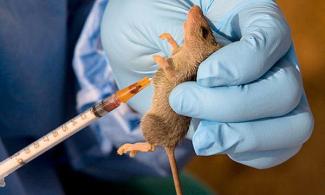
This was revealed in its latest situation report on the outbreak of the disease in the country.
The Nigeria Centre for Disease Control (NDDC) has announced that Bauchi and Ebonyi states recorded new deaths from Lassa fever as the nation’s toll from the disease since the beginning of 2021 rises to 92.
This was revealed in its latest situation report on the outbreak of the disease in the country.

According to the data from the report for Week 50, which covered December 13 to 19, three more deaths were reported in the week under review.
While Bauchi reported two new fatalities, Ebonyi recorded a new death from the disease.
The report partly read that, “Cumulatively from Week 1 to Week 50, 2021, 92 deaths have been reported with a Case Fatality Rate (CFR) of 20.3 per cent, which is lower than the CFR for the same period in 2020 (20.7 per cent).”
Lassa fever is known to be an acute viral illness and a viral haemorrhagic fever first reported in the Lassa community in Borno State when two missionary nurses died from an unusual febrile illness.
Since then, Nigeria has reportedly continued to report cases and outbreaks and the disease is increasingly recognised to be endemic in many parts of West Africa such as Benin Republic, Ghana, Mali and the Mano River region (Sierra Leone, Liberia and Guinea).
According to the NCDC, a total of 190 new cases were suspected in 11 states and the Federal Capital Territory (FCT), but just 10 cases were confirmed in four states.
They include two from Edo, Ondo four, Bauchi three, and Ebonyi has one victim, while two of them are healthcare workers.
The agency further stated that the number of new confirmed cases is the same as the figure reported in the previous week.
“In total for 2021, 17 states have recorded at least one confirmed case across 66 Local Government Areas,” it said. “Of all confirmed cases, 83 per cent are from Edo (43 per cent), Ondo (35 per cent), and Taraba (five per cent) States.
“The predominant age group affected is 21 – 30 years. The male to female ratio for confirmed cases is 1:0.9. The number of suspected cases has decreased compared to that reported for the same period in 2020.”